Dee Estuary Birding
Monthly Newsletter...
January 2022 Newsletter
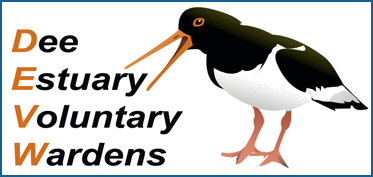
Dee Estuary Voluntary Wardens
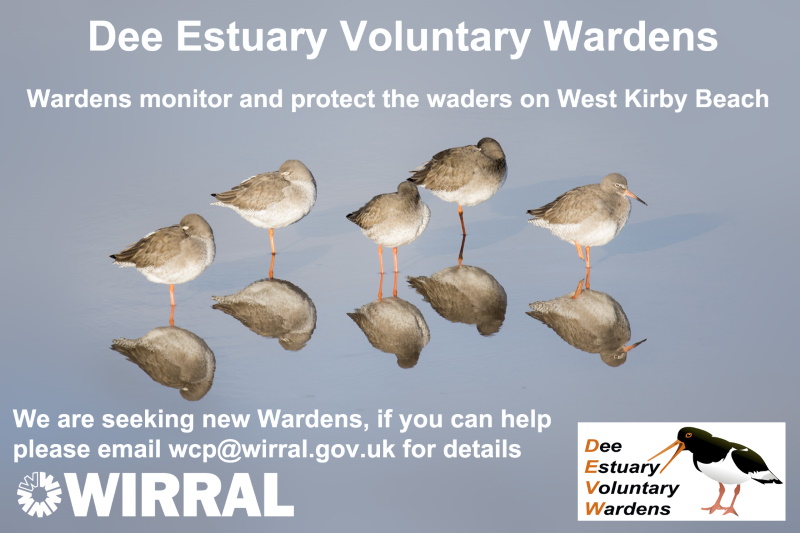
The Dee Estuary Voluntary Wardens protect and
monitor the Birds of West Kirby Shore between the Marine Lake and Red
Rocks and out towards the Hilbre islands. Their main job is to stop
disturbance of the high tide wader roost and this is done by politely
asking people walking their dogs out on the sandbank if they could
possible go in another direction. There are two other important roles
the wardens undertake, firstly that is to chat to passers by and show
them the birds most of who are totally unaware of the hundreds, often
thousands, of
waders out on the sand; in other words the all important job of
educating the general public. Secondly it is to monitor the birds, in
particular numbers of waders in the roost and a wealth of data has been
gathered over many years.
The wardening scheme was set up in 1986 so they have
been going strong for a remarkable 36 years - we think it was the first
such scheme in the country, which, by definition, means it is also the
longest running. I've mentioned one source of disturbance, walkers and
dogs, but we have encountered many others over the years including race
horses, paddle boarders, anglers, para motors, cyclists, kite surfers,
wind surfers, kayakers and photographers. Some disturbances are easier
to stop than others and the easiest to persuade are those people on the
beach we can chat to with the vast majority responding very positively
- in fact some people we have chatted to subsequently became wardens
themselves!
Some disturbances have been more difficult to stop
and one of these is Kite Surfing. When Kite Surfing first came popular
here, around 2002, West Kirby Shore, being shallow, was regarded as
being an ideal practice ground for beginners and we often saw dozens of
them when the
wind was right. As soon as the kites went up the waders would
disappear. But with the help of the Wirral Rangers we talked to the
kite surfers and pointed out the problems they were causing in an area
of international importance for wetland birds. Today, we still see Kite
Surfers both at West Kirby and Hoylake and they are still a problem,
but numbers are much reduced so that was at least a partial success.
In the 1980s race horses were regularly exercised
on the shore and they created havoc. I remember being told of one
incident when one of the wardens went out on to the shore determined to
stop them - with two horses galloping towards him and the wader roost
behind he put out his hand to stop them. The jockeys ignored him with
the horses going either side of the warden who was subsequently
covered from the mud thrown up by the hooves. Thankfully, Wirral
Borough Council who own the shore, managed to get the activity stopped
- I assume on public safety grounds!
I hope the above examples will persuade you about
the
effectiveness of the Dee Estuary Voluntary Wardens, and I'm certainly
convinced that without them that this internationally important wader
roost at West Kirby would no longer exist. The wardens are on duty when
the tides are high enough for a roost to form, which is around two
weeks every month and between mid-September to mid March. Normally
there will be three wardens on duty and the usual stint is typically
one and a half to two hours - depending on tide height. There is a rota
drawn up and you can choose how often you want to warden, some are out
two or three times a week, others just once a month. If you would like
to help, or just have a trial run, send an email to wcp@wirral.gov.uk.
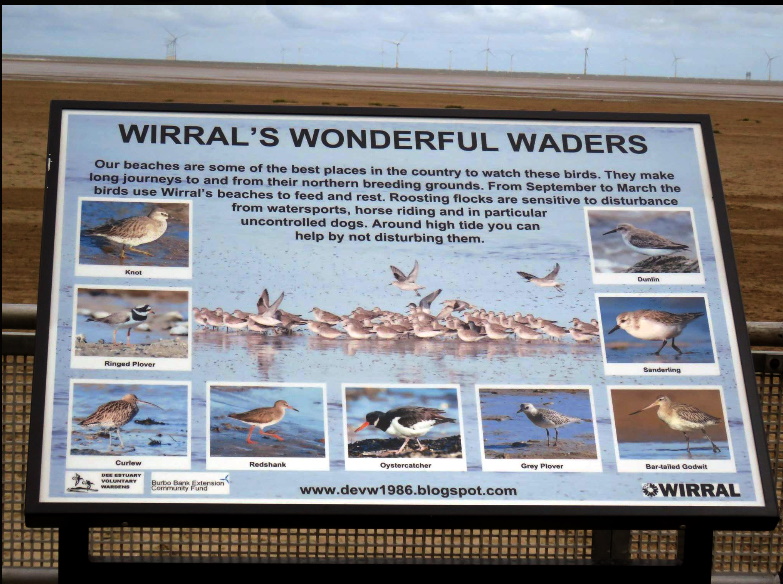

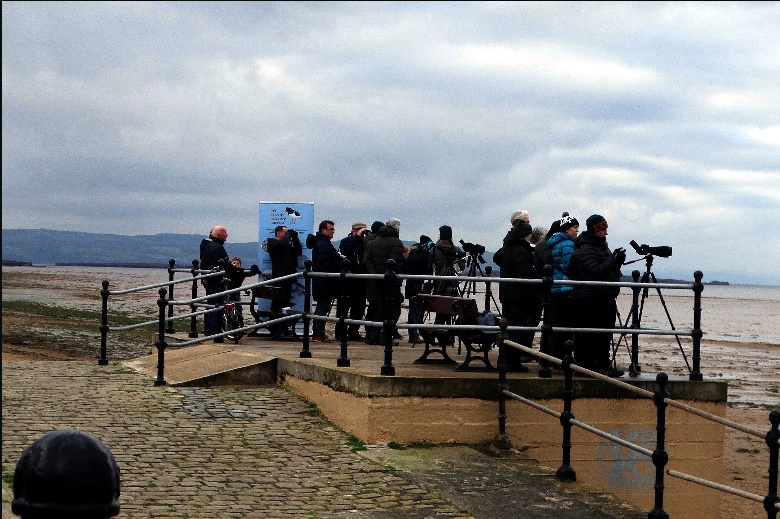
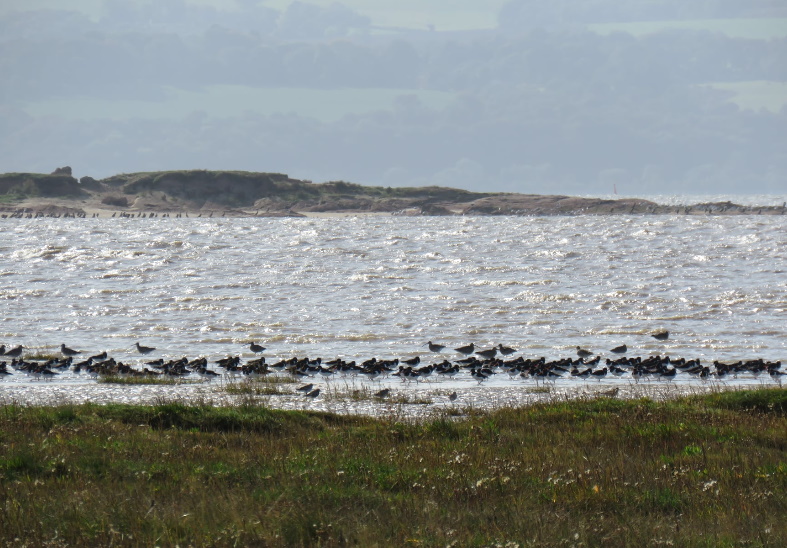
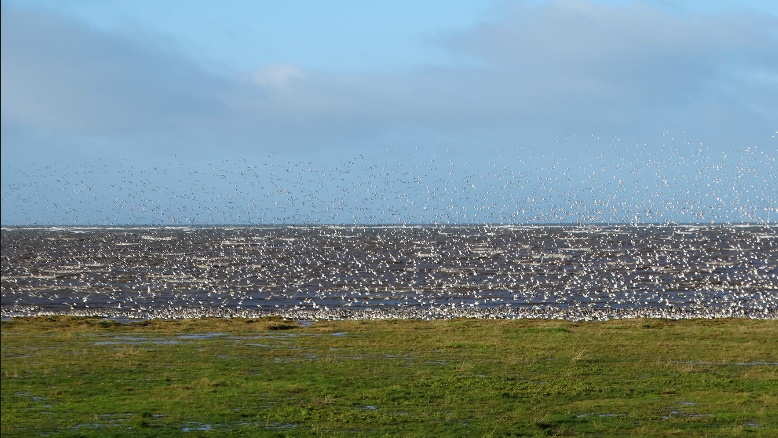
Richard Smith
Colour Ring Report
Knots
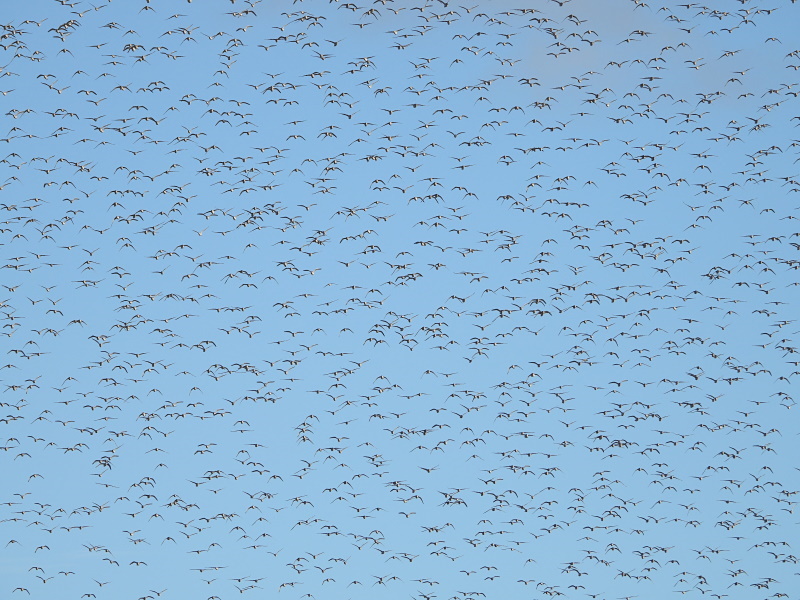
As usual during the winter months our focus is on colour-ringed Knots. There were plenty of knots around with around 25,000 counted off Thurstaston in December. Since they returned in October we have logged 399 records of colour ringed/flagged Knot, although the majority were ringed locally along the Sefton coast we've also seen birds from various other locations as follows:
| Ringing Locations - Number of Dee Estuary Records Oct to Dec 2021 |
|||||
| Sefton Coast |
333 |
||||
| Bangor (North Wales) |
2 |
||||
| Ynyslas (Cardigan Bay) |
29 |
||||
| The Wash |
1 |
||||
| Humber Estuary |
1 |
||||
| The Netherlands |
32 |
||||
| France |
1 |
||||
| Norway |
12 |
||||
| Iceland |
14 |
||||
| Canada |
1 |
||||
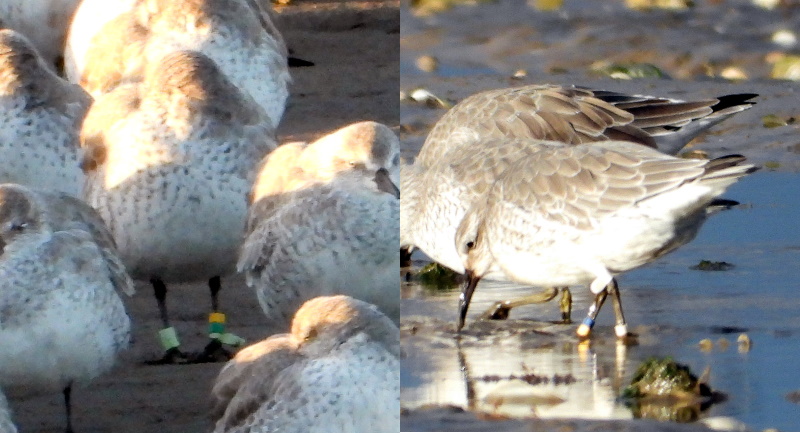
The ringing records tell us that the two oldest Knots we've seen so far
this winter are as
follows:
L7YGLL -
Ringed on the island of Simonszand on the Dutch Waddensea on 24/08/2009.
This is a rarely seen bird. It was recorded in north-east Iceland on
northward migration in May 2011 then it was seen moulting on the
Waddensea (Griend) in July 2014.
We spotted it in the roost at Thurstaston in December 2017 and again in
November 2021 and we were pleased to be able to get a photo.
W1_WBY - Ringed at Alert,
Ellesmere Island, Canada, either in July 2007 or June 2008.
This bird has a ring missing so we can't pin it down to an individual
bird - but it has to be one of five birds ringed on the dates shown.
Alert is just 500 miles from the North Pole!
Since being ringed this bird has only ever been recorded on the Dee
Estuary - in Dec 2012, November 2019, Feb, Nov and Dec 2020 and
November 2021.
(For an explanation of the Knot colour ring codes Click
Here - PDF file).
Almost daily monitoring of these ringed Knot means
we are learning a lot about their local movements and over the past few
years we have noticed that the Knots are increasingly using Seaforth
Nature Reseve as a high tide roost site during spring tides. Of twenty
six Orange flagged knots recorded at Seaforth in November 2021 eighteen
were also spotted at Thurstaston over the same time period. Dee Estuary
knots have long been known to fly across to the Sefton coast on the
highest tides to roost but it's fascinating to be able to pin it down
to individual birds. It's also good news they are using Seaforth as
this is totally undisturbed and I understand they intend to improve the
habitat there to create a larger roosting space.
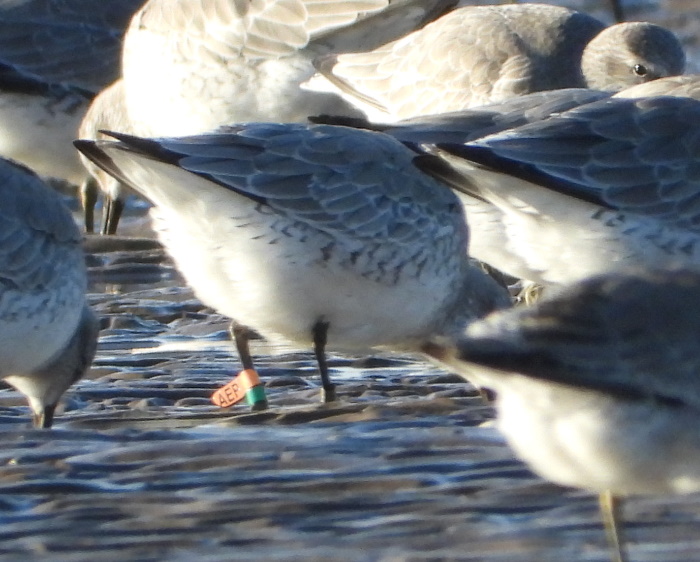
Colour Rings were recorded by Richard Smith, Steve Hinde, Derek Bates, Allan Hitchmough (Merseyside Ringing Group), Les Hall, Tim Kinch and Steve Williams.
December Bird News
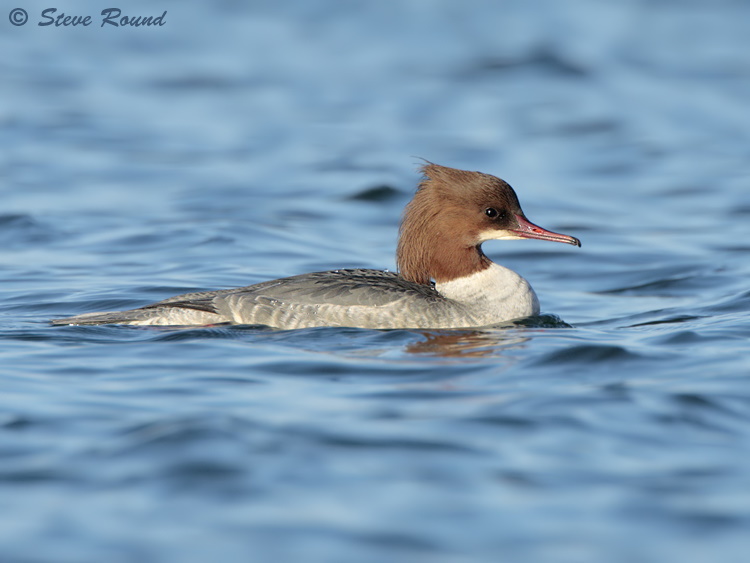
https://www.stevenround-birdphotography.co.uk/
The month started with another record number of Goosanders (20) at West Kirby Marine Lake and the Long-tailed Duck on Shotwick Lake stayed all month. But for me the most pleasing aspect of December were the presence of at least six Short-eared Owls on Burton and Neston marshes after being largely absent last winter. 17 Ravens were also on the marshes and nearby fields, whilst there were at least two adult 'grey' males and two ringtail Hen Harriers along with Marsh Harriers in double figures.

It was good to see Snow Buntings along north Wirral
and Little Eye, by the end of the month five had taken up residence
near Derby Pool, Wallasey Shore.
On a rare flat calm day mid-month 256 Great Crested
Grebes were off Meols shore and a day later 10 Red-throated Divers were
counted from Hoylake. There is a large Cormorant roost on the edge of
Parkgate Marsh and these were recorded leaving the estuary at first
light
every morning with max count of 1,651 on the 13th, on the same day 592
Brent Geese were counted around Hilbre and Little Eye.
An Avocet was an unseasonable visitor at Burton Mere
Wetlands on the 5th as was a Common Sandpiper at Flint a couple of days
earlier, both species have been known to turn up in the winter on the
Dee but only very rarely.
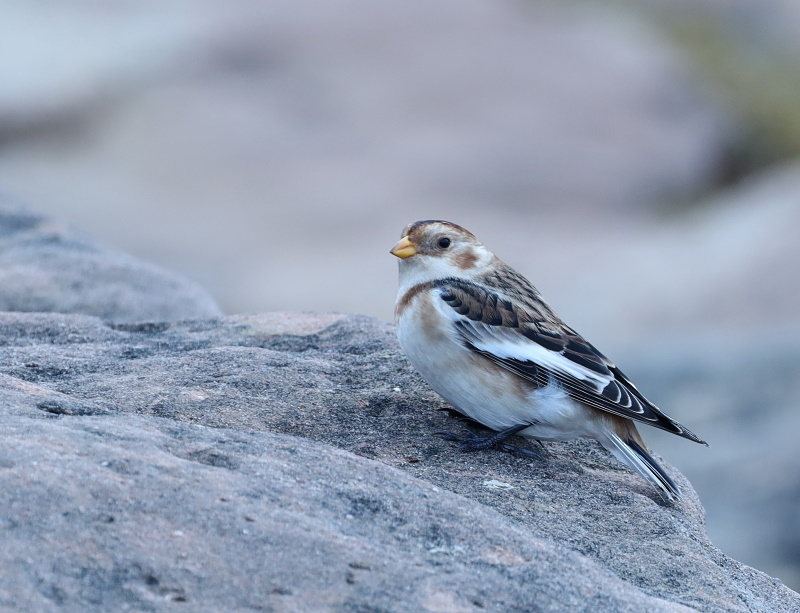
What to expect in January
A prolonged period of cold weather would certainly
be interesting bringing birds from further east to the estuary. I've
often wondered that if we get heavy snow in Lancashire just how many
Pink-footed Geese would end up here - could be spectacular! If inland
freshwater sites are frozen we can also expect good numbers of ducks -
Teal, Wigeon and Pintail on the mud and marshes as well as Goosanders
on West Kirby Marine Lake.
Water Pipits have been very thin on the ground so far this winter which
is surprising as recent winters have revealed that a lot more are
present here than previiously realised. Both Burton Mere Wetlands and
the area around Neston sewage works and Neston Old Quay are the best
spots to find them.
High tides early in the month should result in large wader roosts at
the usual sites of Hoylake and Point of Ayr with Knots, Dunlins,
Sanderlings and Grey Plovers putting on spectacular flying displays.
At least one Bittern turned up at Neston Reedbed last month so that
should stick around - they bred nearby in the summer so maybe more are
out there. It's been a reasonably good winter for Short-eared Owls so
far but I wish rogue photographers would stop going onto the marsh off
Neston, all they are doing is pushing the birds further away and
spoiling it for everyone else.
Top of Page
Forthcoming Events
January Highest Spring Tides (Liverpool)
Also see Tides page.
3rd January, 11.12hrs (GMT), 9.6m.
4th January, 12.02hrs (GMT), 9.7m.
5th January, 12.51hrs (GMT), 9.7m.